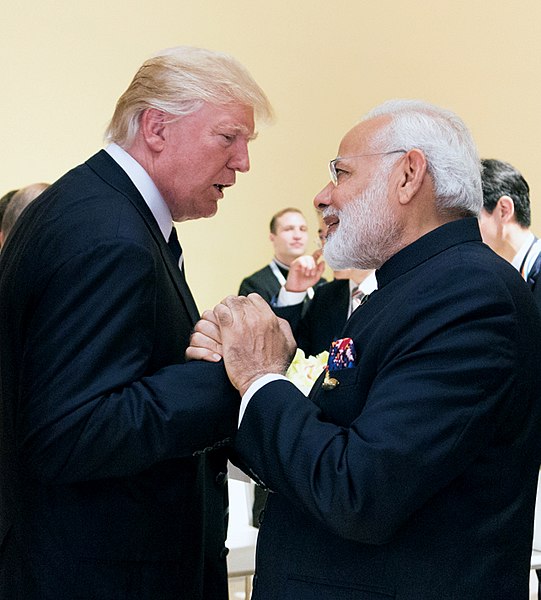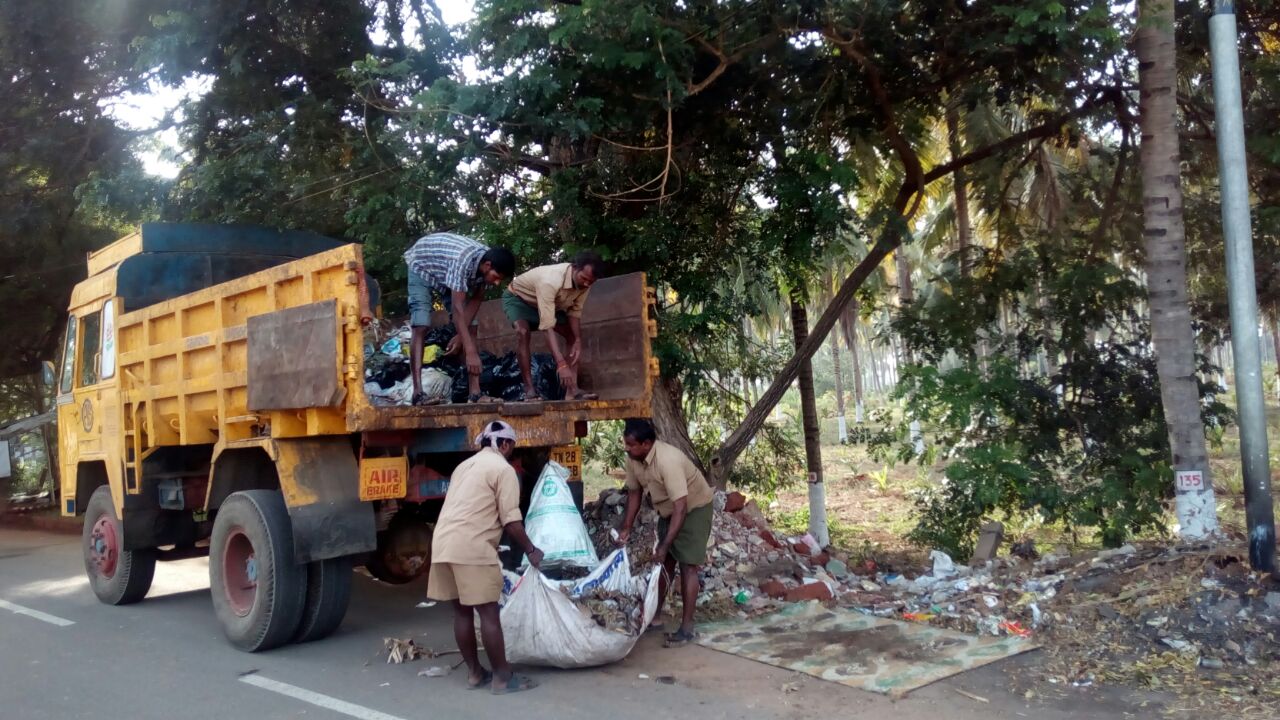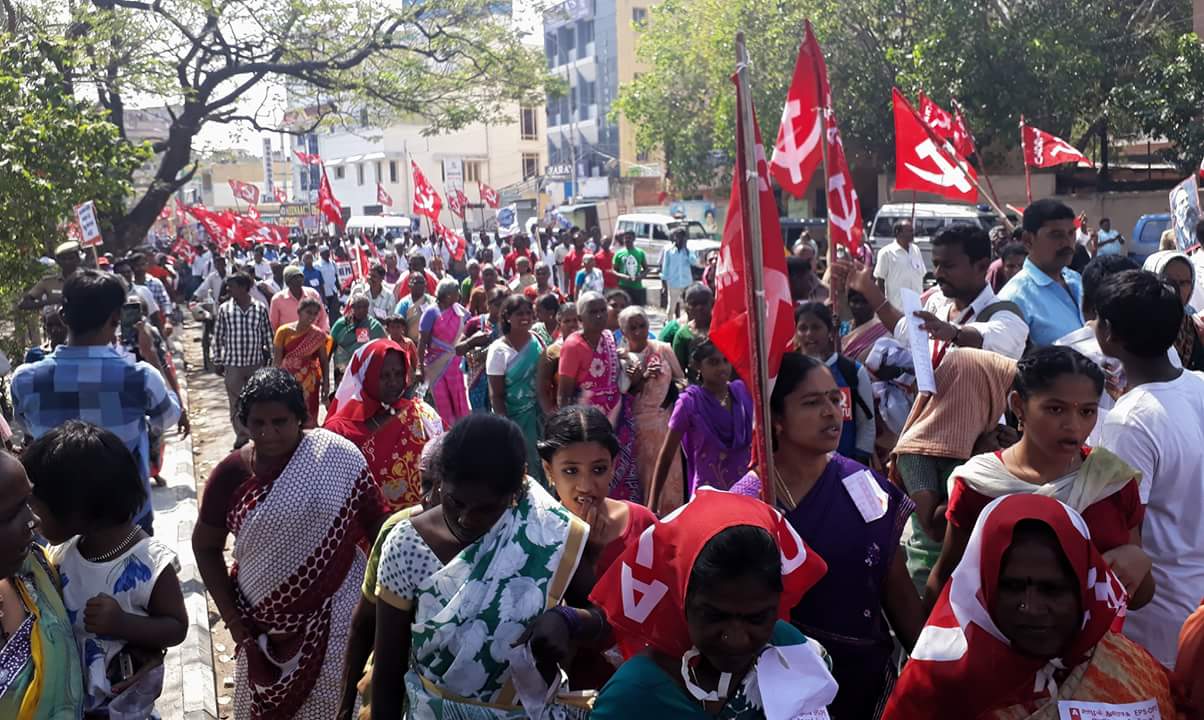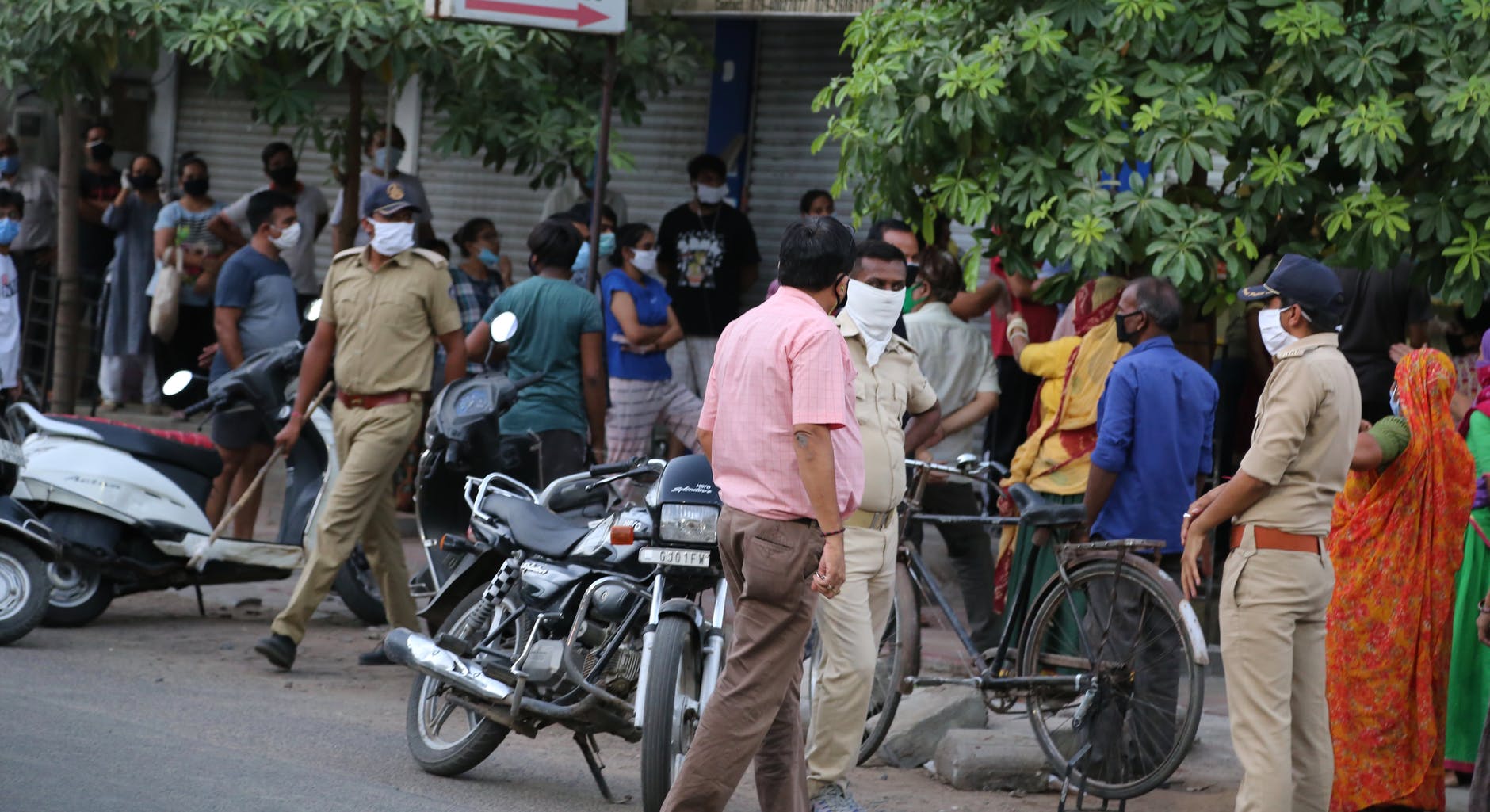India now has the world's fourth-highest infection rate, with confirmed infections of 425,282 and an overall death toll of 13,699 and climbing. Without providing healthcare or aid for millions, Modi has washed his hands of the crisis, and turned his attention to saving Indian capitalism at the expense of workers and youth in his “Unlock 1.0 India” scheme. 10 major trade unions have called a new general strike on 3 July against attempts by Modi’s government to impose draconian working conditions on the working class.
India's shutdown of the country was the most draconian lockdown attempt seen in history, in a country of 1.3 billion. Massive cities with tens of millions bustling around on highways and public areas were emptied as people overnight vanished into their homes or took the hellish trek back to their villages, with many walking thousands of miles back home with their old parents and kids. Many died during this horrific journey, which was much more bitter than that at the time of partition of India in 1947. The 68-day, inhumane lockdown entailed spraying people with ‘disinfectant’ chemicals, locking people inside, and expulsions of migrant workers from cities. As India inches towards its third and final stage to open up the country, it's clear that the situation will become more devastating for healthcare workers and other working people.
 In a cynical speech, Modi stated that people should use yoga to build “community, immunity and unity” / Image: White House
In a cynical speech, Modi stated that people should use yoga to build “community, immunity and unity” / Image: White House
From the beginning of the lockdown in March to 30 May, COVID-19 cases climbed from 606 to 138,845. The Modi government did not use the lockdown time to attempt to create any form of treatment or investment into a vaccine, nor did it increase resources for various city hospitals in terms of beds and equipment. Modi’s regime couldn't even secure a meagre monthly allowance for the vast majority of the unemployed and starving.
In major cities like Mumbai, New Delhi and Chennai, the situation is particularly dire. City officials in New Delhi have predicted that the number of infected will increase 20 times more than current figures, which means that roughly half a million Delhi residents will contract it. India spends only 1.3 percent of its GDP on healthcare. The already abysmal health care system and its workforce are completely unprepared and outnumbered for this massive increase in COVID-19 cases. On top of this, there is a severe lack of testing. To date, India has one of the lowest rates of testing in the world.
Since April, there have been nurses protests happening in different parts of the country. Nurses who are already underpaid and overworked are sent to the front line in the fight against the pandemic with little personal protective equipment (PPE). During the first week of June, nurses at the All-India Institute of Medical Sciences (AIIMS), a top hospital in New Delhi, have been protesting over long shifts, unhygienic work stations and the lack of PPE. When they do get protective suits, they are forced to wear them for extended periods of time with limited breaks in facilities with no air conditioning. Fameer C.K, union secretary of the nurses union, which represents 5,000 nurses, reported that nurses are fainting from the heat. The failure to properly quarantine COVID-19 patients in separate areas in the hospital has led to more than 350 medical workers at AIIMS and 150 family members getting infected.
Doctors are also not being paid their salaries on time and are pushed to work longer hours at the hospitals. Dr Rajan Sharma, President of the Indian Medical Association (IMA), said the following:
“Doctors have not been paid, basic allowances have been cut. We don’t have legal immunity in many states. There is no single set of guidelines for healthcare workers in India. Each state has its own agenda. Doctors are victims of political slugfests and arbitrary orders. All this exhausts and demotivates us more. And nobody talks about sanitation workers, the most important cog in this wheel. They have been working day and night but are so poorly paid. How can we expect them to continue working?”
The extent of the suffering that the vast majority of the Indian population endures is of course lost on Modi, who on 30 May in a cynical speech stated that people should tap into the benefits offered by yoga as the power of yoga helps to build “community, immunity and unity”.
Misery for millions, profits and speculation for a few
Modi swept to power six years ago by promising to create 20 million jobs. But following years of slow economic growth, this will be India’s worst to date, with the highest unemployment rate in the last 45 years. In April, India’s unemployment increased from 7.4 to 27.1 percent. This translates into the loss of 122 million jobs.
The World Bank projects that the Indian economy may contract by 3.2 percent in 2020-21. According to the World Bank, India will see 400 million pushed into extreme poverty due to the COVID-19 pandemic. This will have serious repercussions for India in the next period.
In response to this crisis, Modi promised a generous stimulus package on 12 May. He promised 267 billion dollars (or 10 percent of GDP) would be given out to revive the economy and provide financial relief to millions. However, shortly after his announcement, economists broke down the numbers and revealed the stimulus package to be no more than 1 percent of GDP.
When the lockdown began in late March, the Ministry of Labour and Employment asked private businesses to hold off on firing workers and giving all workers a 45-day severance package. But many large scale businesses and chains ignored this and continued to lay off workers with little to no compensation.
Young people below the age of 25 make up half of India’s population and more than 65 percent are below the age of 35. Over 27 million young people in their 20s have lost their jobs. A government report last year stated that 33 percent of India’s skilled youth are jobless, and an election poll that year also found that the youth’s overarching concern was unemployment.
The general landscape for young people in India before the COVID-19 pandemic was already dire. For example, in 2016, more than 1.5 million people applied for 1,500 vacancies at a state-owned bank; more than 9 million took entrance exams for fewer than 100,000 posts on the railways; and more than 19,000 applied for 114 jobs as municipal street sweepers. Only 2.3 percent of the Indian workforce has had formal training, compared to 96 percent in South Korea; and less than a fifth of Indian graduates can find a job after graduating.
With massive unemployment, a lack of jobs and declining standards of living, what future can be promised by a pro-capitalist, anti-labour government like that of Modi? Today, young people feel a huge dissatisfaction with Modi and the political establishment. This was clear during the anti-CAA (Citizenship Amendment Acts) protests that erupted throughout the country and at many universities in January 2020. Though the protests were peaceful and instigated no violence, the movement was beaten back with police batons, tear gas and hired gangs. More than 45 were killed during a brutal police crackdown on protests in Delhi when Trump visited India at the end of February.
The ability to end poverty and hunger, and to resolve this pandemic clearly exists on the Indian subcontinent but the wealth and means to do that are owned by a few. India’s richest 1 percent have four times the wealth of 70 percent of the population. The total wealth of all Indian billionaires makes up more than the full-year budget for the nation. This eye-watering equality has only been achieved by the blood and sweat of workers. The Indian ruling class is prepared to do anything to save this system of inequality.
Mass dislocation of migrant workers
 Workers feel abandoned and humiliated by the suffering they have endured due to Modi’s policies / Image: fair use
Workers feel abandoned and humiliated by the suffering they have endured due to Modi’s policies / Image: fair use
Today, 90 percent of the nation’s workforce are employed informally. This means they do not have a contract and are usually paid daily in cash, if they can find work. When the lockdown began at midnight on 25 March, an estimated 10-30 million migrant workers were forced to leave their homes within days, as many had no money to spend another day in the big cities. This amounted to the greatest dislocation of people since the bloody partition imposed by British imperialism in 1947.
There have been more than 150 migrant worker protests involving hundreds to thousands of stranded migrant workers. Millions who believed in Modi’s promise for jobs and financial aid have instead faced starvation, sleepless nights at trains stations and police beatings.
On 10 April, hundreds of migrant workers in India’s state of Gujarat protested to be sent home. Over 500 workers employed in industries in the Hazira belt on the outskirts of Surat, gathered demanding that the authorities send them home on trains. These migrant workers were given no food and water and no government aid. The police beat up protesters and fired tear gas at them.
Regardless of what BJP representatives have been saying about taking care of India’s most vulnerable, more than 300 deaths have been reported in relation to migrant workers facing starvation, suicides, exhaustion, deaths on the rail tracks and police brutality.
Yet the misery doesn't end there. When a large portion of migrant workers did return home in overcrowded trains and buses they also brought the virus with them. In the rural areas, there is little to no hospital infrastructure to deal with the pandemic. In Odisha state, 80 percent of recent coronavirus cases are from migrant workers.
Today, these workers feel abandoned and humiliated by the suffering they have endured due to Modi’s policies. The mass humiliation of India’s largest labouring class at the hands of police and the state will play a role in the consciousness of Indian workers after the COVID-19 crisis.
A race to the bottom for Indian workers
 The unions have announced a strike for 3 July / Image: fair use
The unions have announced a strike for 3 July / Image: fair use
Modi is using this time to strip down labour laws to jump-start the economy. This, of course, is just a continuation of what Modi was doing before the pandemic. However, Modi has found the pandemic to be the most opportune time to further attack the working class. In the name of national unity and to save India from economic collapse Modi and BJP states are carrying out more anti-labour and anti-union legislation.
For the last few years, the BJP has passed bills to gut existing labour laws and weaken unions. From 2018 to 2019, Modi’s government pushed through the Industrial Relations Code (IRC), which replaced the three key laws – the Trade Unions Act from 1926, the Industrial Employment Act from 1946, and the Industrial Disputes Act from 1947 – with one bill that will essentially allow employers more freedom to exploit workers and restrict the ability of trade unions to form and take action.
Now, with hopes to attract more foreign investment, major states like Gujarat, Punjab, Uttar Pradesh and Madhya Pradesh have completely suspended all labour laws. Most of these states are under BJP rule and are pushing the workday from eight to 12 hours. There are also many other states that are suspending minimum wage laws and loosening hiring and firing regulations.
Uttar Pradesh, a state under BJP rule, with the same population size of Brazil, has exempt all factories and establishments from all labour laws for a period of three years, including removing the minimum wage. Though they claim they will adhere to child labour and compensation laws, they are dissolving the right for trade unions to organise, recruit, and strike.
In Madhya Pradesh, workplaces with less than 300 workers are exempt from labour laws, and employers are given more freedom to hire and fire workers regardless of the number of workers present.
These vicious attacks on the Indian working class come at an opportune time for Modi as the pandemic will be used to silence and beat back workers' protests that will erupt in small pockets across the country.
Modi and his government are essentially hurling the Indian working class back 100 years. Where the labour movement spent its blood, sweat and tears on winning the eight-hour working day internationally, Modi plans to once again subject the Indian workers to historic levels of exploitation and wage slavery.
Labour must organise to defeat Modi
10 major trade union federations of India have now called all unions and workers to prepare for a nationwide protest and a one-day general strike on 3 July. Major unions rightly accuse the Modi government of using the pandemic as a cover to carry out wholesale privatisations of core public sector areas like the railways, defence, port and dock, coal, Air India, banks and insurance companies, and carry out attacks on the working class. In response to selling off public coal, major unions of the coal sector will also strike for three days in July. Unions are proposing that the nationwide strike carry on for six months, with demonstrations and protests across all industry sectors. This is the second nationwide strike in less than two months.
Striking and protesting to flex the power of labour is important, it instils confidence in the workers that they can organise en masse, and shows them how much power a united working-class movement can have; but a continuous show of strikes will not solve the problem. For the past few years, the Indian working class has heroically been striking, protesting and mobilising against the Modi government. The Indian trade unions already organised one of the worlds largest general strikes in history on 8-9 January 2020, without being able to stop privatisations and attacks on the working class. It is clear that what is needed is not more one or two-day general strikes, but an all-out general strike to bring down the Modi government.
Capitalism on a world scale is facing its deepest crisis since the Great Depression, and countries like India are not exempt from that. This deep crisis will provoke massive movements within the working class and youth. In this period, Modi will try to use more communal and nationalist violence to divert and cut across rising workers struggles and strikes.
A general strike connected to a revolutionary programme to overthrow Modi and Indian capitalism for a workers government and a socialist Asia is the only way to end this misery. India has a workforce of over 520 million. But only 6-7 percent are employed in formal work, and only 2 percent are unionised. Yet, regardless of the small population of unionised and formal salaried workers, if these layers were to lead migrant workers and farmers in bringing this nation to a standstill, they could overthrow Modi with ease.
If the major economic levers of Indian capitalism were nationalised and placed under workers’ control, hunger, misery, oppression, illiteracy, and all the humiliating things the ruling class has subjected millions to could be solved. This needs to be connected to an internationalist programme for a world socialist revolution.
Without such a programme, we will see the massive potential of the Indian working class displayed time and time again with meagre results. We will continue to see more attacks on the working class. The Congress Party is a capitalist party and does not represent an alternative, along with many other parties that in one way or another are trying to reform a broken system.
More than anything, what is necessary is to build the genuine forces of Marxism in India to provide leadership in the fight for socialism. The International Marxist Tendency will work to advance these revolutionary ideas within the labour and student movement.
- Turn the one-day national strike on 3 July into an all-out general strike!
- Abolish all anti-union and anti-labour laws!
- Nationalise and provide free healthcare to all!
- A living wage for all migrants and unorganised labour!
- Nationalise major industries under workers’ control!
- End communal violence and poisonous nationalism!
- Bring down the Modi anti-working class government and Indian capitalism!
- For a socialist India and a socialist South Asia as part of a socialist world!
